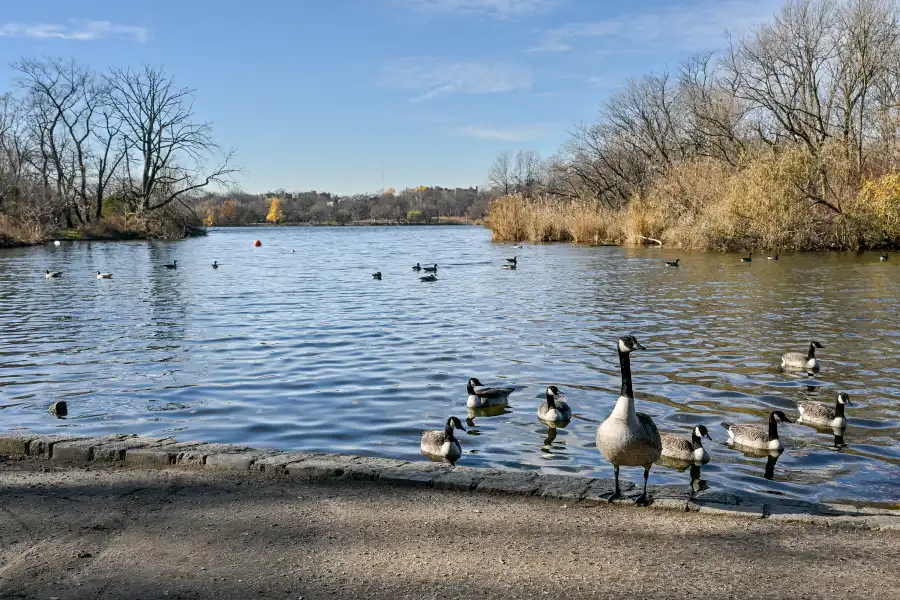Progress for 70 Lefferts Place Preservationists
Big news on 70 Lefferts Place front: According to Council Member Letitia James, the Landmarks Preservation Commission has decided to “calendar” the property on this coming Tuesday for a public hearing. This is meaningful because once something’s on the calendar, no demolition permits may be issued. Stay tuned for details on the meeting. Movement to…


Big news on 70 Lefferts Place front: According to Council Member Letitia James, the Landmarks Preservation Commission has decided to “calendar” the property on this coming Tuesday for a public hearing. This is meaningful because once something’s on the calendar, no demolition permits may be issued. Stay tuned for details on the meeting.
Movement to Preserve Lefferts Place Gem [Brownstoner] GMAP





This is from the National Park Service website about Atlanta’s historic sites:
“Atlanta has long been glibly characterized as a city without historic architecture–“Sherman burned it all, you know.” Besides ignoring the “brave and beautiful city” that Henry Grady and his New South compatriots championed after the Civil War, that comment also forgets that some of the city’s most distinguished antebellum architecture was destroyed long after the war, including the original county courthouse and the city’s downtown churches, all of which had been torn down and rebuilt by the 1890s. Numerous examples of antebellum residential architecture also survived into the 20th century around the fringes of downtown, although none survived past mid-century. The Leyden House, one of the few high style Greek Revival houses built in the city, was demolished by real estate speculators in 1913. The Italianate Neal Mansion, which Sherman used as his headquarters during the Federal occupation in 1864, was demolished in 1927 for construction of a new city hall. And the city’s first two-story house, which dated to the earliest days of the city in the 1840s, was torn down in the late 1930s for a warehouse.
The pace of destruction quickened dramatically after World War II as dozens of downtown buildings were demolished for parking lots and garages, including the legendary Kimball House hotel, whose demolition in 1959 signaled the beginning of a wave of demolitions that destroyed many of the city’s most famous landmarks in the 1960s and 1970s. “Urban renewal” laid waste to hundreds of acres in the city, much of which would lie undeveloped as “white flight” and general disinvestment sapped the city’s vitality and diminished its tax base. Freeway construction, too, which began in the late 1940s, brought three major highways through the heart of the city and destroyed hundreds of businesses and residences in the process.”
9:54, my mother was born in Georgia, I went to college there, I’m not just talking out of my a**, I’m merely passing on what every historian in Georgia knows – Atlanta as a city was and is very very ambitious and they willingly and gleefully tore down a LOT of historic homes and buildings in building up the city. Yes Sherman burned Atlanta, but a lot of it was spared, a lot that got torn down later by the city of Atlanta. The exhibit I saw WITH MY OWN EYES was comprised of early 20th century photographs (in other words AFTER the civil war) of all the historic homes and buildings that once stood in that college town (Athens GA) which are now GONE. Because the city tore them down, not Sherman. The city of Athens GA now has a big preservationist movement, spearheaded by the longtime Mayor, and REM and other community figures. Why do you assume I’m just making this stuff up?? This site attracts the most ignortant people sometimes. Either that or it’s Fedders himself once more back on these threads trying to pretend developers never destroyed any historic buildings in this country.
LOL…thanks for setting the historical record straight, 11:54pm. That’s right, Sherman didn’t burn anything in the South. In fact, he went out of his way to recruit carpenters and skilled craftsmen precisely so that, as he cut across the South, he and his army could build more antebellum mansions and actually add to the South’s architectural legacy. It was terrible, though, because as soon as his army built a mansion some progress-hungry mob of Southerners would tear it down. The bastards!
Hi, it’s 5:04 here again. Yes, what’s hard to do, even when a community is lucky to have proactive preservationists, is getting the rest of the community to care about protecting historic buildings. Before a building is threatened by a developer, that is. One idea I saw in a college town in the South that effectively got people worked up about preservation even during “peaceful” times – an exhibit of historic photographs of houses that used to stand on various commercial districts streets in town. In this case, gorgeous, big, antebellum mansions. Placed next to them were pictures of what stood now, in their place. Inevitably some ugly little brick building holding dental offices or a fast food restaurant. (What’s hilarious is much of the South tries to claim Sherman burned everything. Not true! Southerners themselves did it, hungry for progress.) Anyway, websites, exhibits, anything that can continually remind people of what was already lost in past decades, is an effective rallying cry without having to first wait for a developer to come along and try and knock down yet another historic building. Could be a very nice permanent section to add to this site. “Gone but not Forgotten in Brooklyn”.
In general, I am inclined to agree with 5:04, but the community has been pro-active on this issue. The Fort Greene Association and the Society for Clinton Hill have been working for years to get those two historic districts expanded. If I understand the situation correctly, that effort is now tied to the pending re-zoning of the neighborhoods – another pro-active grass-roots effort! – that is just dragging on and on at DCP.
Well said Anon 5:04. i never meant to imply that preservation was the “Development community’s” responsibility.
Absent impedements, such as landmark status, it is only natural that most developers will try to maximise profits. Although there ARE exceptions, that’s their nature. Would that the LPC were more pro-active. You’re right that people in historic neighborhoods should try to prod them into doing their job.
I just shocked that Tish James should finally be involved in something sensible and good for the community.
With all respect to Bob Marvin, the preservation-minded community should itself have anticipated this threat, and in general be proactive not reactive. I seem to always see the rallying cry go up only AFTER a property or area is threatened. To convince everyone it’s the Development community’s responsibility and not the preservation community’s responsibility to protect historic buildings – that’s a pretty tough (impossible) argument and campaign to wage. That’s like saying we’re going to try and get the Republicans to care more about civil rights, so we don’t have to watch over them so closely.
Those who are concerned that the developer of #70 Lefferts might suffer excessive hardship because of landmarking should note that he was featured in the NY Times two weekends ago, and said he owns $15,000,000 in property in the area, which he plans to develop. If the landmarking actually goes through, I don’t think it’s going to crush the life out of a hardworking small businessman.